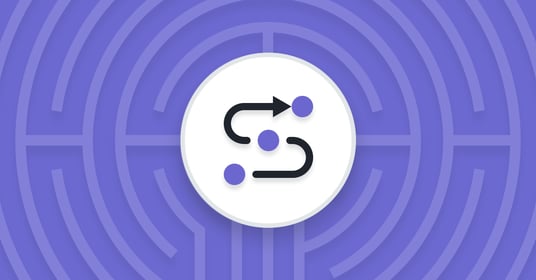Quality engineering teams rely on the strength of their end-to-end testing strategy to ensure their software applications deliver a high quality user experience. By simulating real user scenarios with e2e testing, quality assurance teams can adequately validate the software along with its various interconnected subsystems and integrated components.
The problem is that it’s often time-consuming and complex to test full end-to-end user journeys - especially when executing those tests with legacy scripted solutions - so many teams leave these tests for the final stages of development. This approach creates unnecessary bottlenecks and could introduce additional bugs in production. By implementing an e2e testing strategy that’s data-driven and agile, QA teams can more efficiently test user journeys throughout the development pipeline.
In this post, we’ll discuss the key metrics you can track to measure the effectiveness of your end-to-end testing strategy and ways to adjust your strategy over time.
Key End-to-End Testing Strategy Metrics for a Great Start
The key to implementing a successful e2e testing strategy is choosing the right metrics to track from the beginning. Metrics help QA teams align their testing efforts to software quality while also enabling a data-driven approach to adjusting their testing strategy as conditions change.
Here are a few essential e2e testing metrics to consider:
- Preparation Status: This tracks the progress of creating new test cases that have been planned. While it’s crucial to plan additional test cases to cover new software features, it’s also important to monitor their preparation status to ensure there are enough QA resources to prepare these test cases.
- Test Coverage and Progress: These metrics track the percentage of functionality that has test cases and whether these test cases have been executed, which indicates how well the testing strategy reflects changes to the software or customer experience. In most cases, e2e testing can expand test coverage because each test case covers an entire user story.
- Error Percentage: This quantifies the errors detected and compares this amount to the number of successful test cases. This helps QA teams identify bugs and prioritize remediation based on severity and impact.
Adjusting Your E2E Testing Strategy
When it comes to implementing an effective e2e testing strategy, it’s crucial to continuously evaluate key areas that may need to be adjusted. The most common factors that impact your testing strategy are new product features, updates to integrated solutions, customer feedback, user behavior, and the evolving testing industry itself.
New Features
First, it’s crucial that you update your e2e testing strategy when new software features are designed and developed. As your software evolves, your testing strategy will need to reflect these new customer experiences.
Does preparation status indicate that the QA team is actively creating tests to cover the new features? New software features have the potential for customers to dramatically change the way people use your product, so additional e2e test cases are essential for mitigating the risk of customers discovering bugs in new releases.
Updates to Integrated Solutions
Modern software development relies not only on the code that is developed in-house but integrations with a variety of best-of-breed external solutions; and it’s a combination of both that make up the final product customers see. Providers of those integrated services and solutions are delivering updates on their own timeline which can potentially create issues with your solution. It’s important to consider those integrations within your end-to-end testing strategy and build in tests for the code that’s developed in-house, as well as how that code is behaving alongside those integrations to ensure the quality of the entire end user experience.
Does end-to-end testing reflect the true customer experience? True end-to-end testing goes beyond functional UI tests and incorporates validation of the entire experience. That experience oftentimes will require API, mobile web, email, PDF and even accessibility tests to ensure the application is behaving as expected and customers leave with a positive overall experience.
Customer Feedback
When the customer service or support team sees an increase in support tickets and identifies areas where customers are having issues, it’s crucial to evaluate why these problems are reaching production.
Is test coverage low for certain user stories, indicating that they’re not being adequately tested? The most effective end-to-end testing strategy focuses on the most common ways customers interact with your software, so it’s important to adjust your testing strategy based on customer feedback.
Does the error percentage indicate that there are failed test cases that have not been addressed? By shifting e2e testing earlier during development, these failures can be addressed before the software changes are pushed into the next stage in the delivery process.
User Behavior
Over time, you may find that customers aren’t using certain features of your application frequently. By analyzing user behavior and prioritizing test cases that match usage patterns, QA teams can focus their testing efforts on what impacts the customer experience the most.
Are certain areas of the application no longer being used frequently or at all by customers? Removing test cases that are no longer relevant to the customer experience can often reduce the size and complexity of your e2e testing suite without negatively impacting test quality.
Evolving Workforce
The latest generation of testers are low-code natives, meaning they expect intuitive and easy-to-use tooling for designing and performing software tests. In addition, powerful new automated testing frameworks are changing the role of quality assurance teams at many enterprises.
Does our current toolset enable more team members to get involved with software testing? Low-code, automated testing solutions make building and maintaining an e2e testing suite more accessible to developers, support, and quality assurance teams.
Optimize your E2E Testing Strategy with mabl
While quality assurance teams can learn a lot from individualized testing methods, end-to-end testing is crucial to gain confidence that the software works as a whole. Moreover, the right e2e testing strategy makes it possible to test full end-to-end user journeys, aligning software testing more closely to the intended customer experience.
Along with an effective e2e testing strategy, the right automated testing solution enables QA teams to collaborate more closely with development teams to test end-to-end user journeys testing earlier in the development process. This allows organizations to find bugs more quickly, minimizing the cost and effort associated with mitigating them.
Mabl’s low-code test automation platform enables QA teams to stay aligned with their e2e testing strategy by capturing the true end-to-end user journey, quickly and reliably running e2e testings, and enabling the reuse of tests across multiple stages of development. Mabl also helps QA teams rapidly create tests to meet the changing requirements of their e2e testing strategy.
Learn more about how integrating mabl’s true end to end automated testing can keep DevOps teams on track to meet their product delivery goals.






